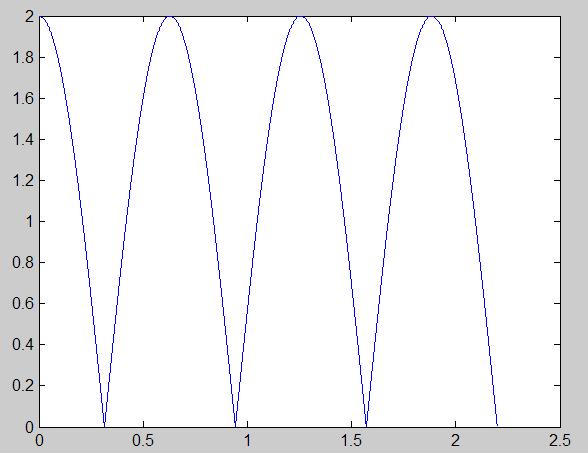(→Periodic Signals and Non-Periodic Signals) |
(→Periodic Signals and Non-Periodic Signals) |
||
| Line 7: | Line 7: | ||
As can be seen below, when the function mentioned earlier is sampled at the inappropriate frequency, the signal becomes non periodic. This function can be represented by <math>x[n] = |2*cos(.5*n)|</math> and is graphed below at a sampling rate of <math>1/7\pi</math>. | As can be seen below, when the function mentioned earlier is sampled at the inappropriate frequency, the signal becomes non periodic. This function can be represented by <math>x[n] = |2*cos(.5*n)|</math> and is graphed below at a sampling rate of <math>1/7\pi</math>. | ||
| − | |||
| − | |||
Revision as of 17:13, 11 September 2008
Periodic Signals and Non-Periodic Signals
Most of the signals from Homework 1 were boring (including mine) so I thought I'd broaden the periodic signal pool. I chose the CT signal: $ x(t) = |2*cos(.5*t)| $ . A graph of this signal in continuous time is shown below.
As can be seen below, when the function mentioned earlier is sampled at the inappropriate frequency, the signal becomes non periodic. This function can be represented by $ x[n] = |2*cos(.5*n)| $ and is graphed below at a sampling rate of $ 1/7\pi $.


